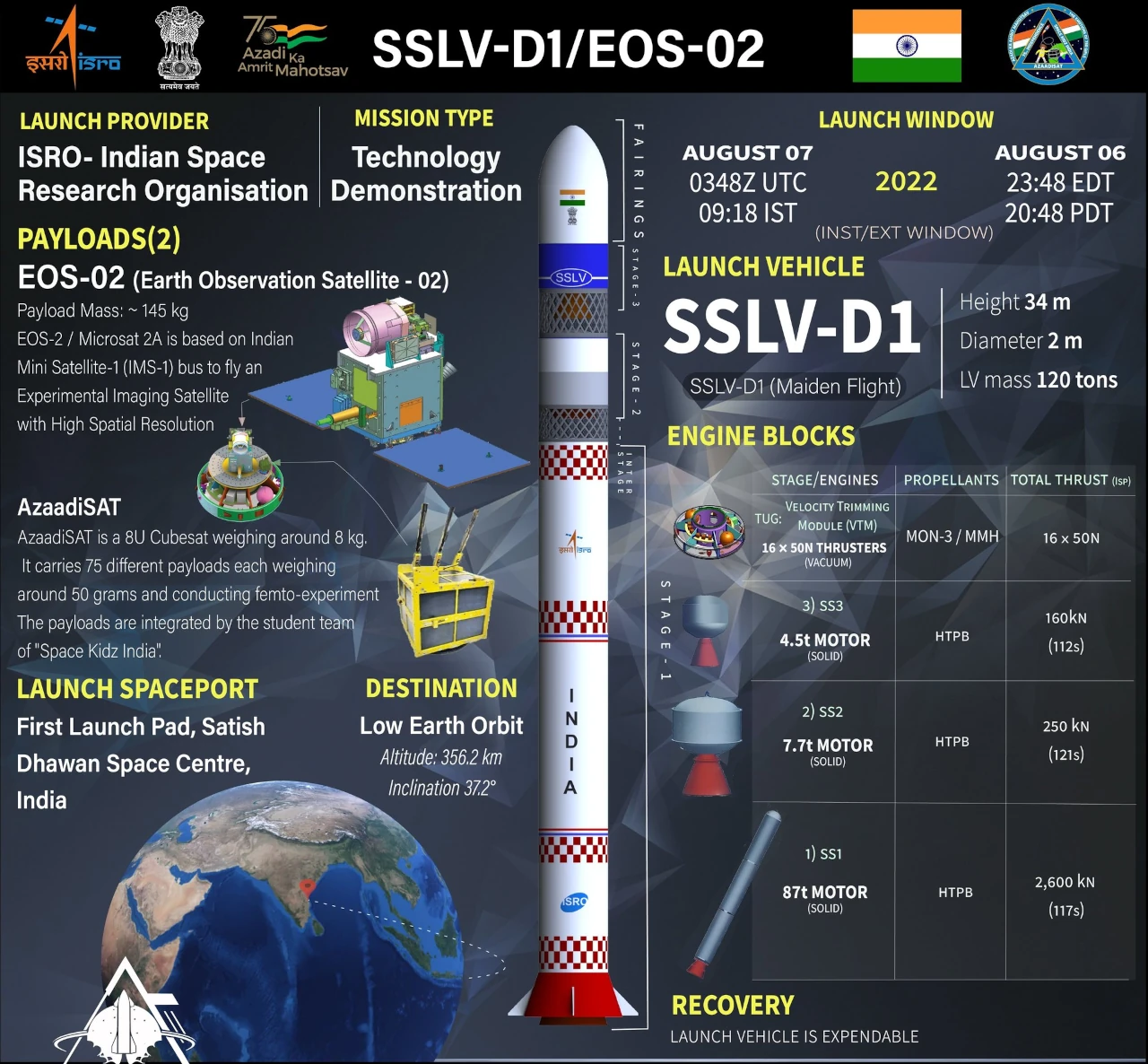Putting two satellites into the wrong orbit, resulting in their total loss, the Indian Space Research Organization’s ( ISRO ) new Small Satellite Launch Vehicle ( SSLV ) rocket launch raised several questions, and one among them is if the organisation needs to be really dealing in smaller satellite launchers.
SSLV
The SSLV rocket, costing about Rs 56 crore and capable of carrying satellites weighing 500 kg or less, is intended for the country’s commercial and strategic needs.
Following the mission’s failure, Isro chairman S. Somanath said, Instead of a circular 356 km orbit, SSLV-D1 put the satellites in an elliptical 356 km x 76 km orbit. The lowest point close to the earth’s surface is 76 kilometres. He contends that satellites deployed in such an orbit will fall within a short amount of time. According to Somanat, two satellites have already left this orbit and can no longer be used.
The inability of the logic to recognise sensor failure and take rescue action, according to Isro, produced a divergence. The committee will investigate and make recommendations. Isro will return with SSLV-D2 soon after adopting the advice.
Somanath said that an expert panel would look into the failure and determine why it entered an unacceptable orbit. After making minor fixes and re-checking the fixes, Isro will soon start the next run of SSLV.
He also said that the rocket’s three stages/motors and all other systems worked well.
What went wrong?
Speaking to The Hindu, ISRO Chairman said that the accelerometer measurement revealed an abnormality right at the instant of the second stage’s separation. The onboard computer concluded that the accelerometer had failed when it displayed such an abnormality. Then it initiated a process known as the salvage operation.
It then commences what is known as open loop guidance instead of closed loop guidance. That is, it functions in an open loop guiding from that point [of failure] until salvage. There is already a path in the computer that should be followed in order to reach the satellite. So instead of looking for acceleration data, [the rocket] will just follow that course. Once this happens, the capacity to place the satellite in the proper orbit is slightly limited.
So, towards the finish of the next stage firing, the computer believes/assumes that it cannot continue any further but must somehow separate the satellite after the burning of the motor. This is not a liquid stage [that is, liquid propellants do not power it]. It’s a solid rocket [with solid propellants].

However, the solid motor cannot be stopped in the middle. The computer will wait until the current firing of the solid motor is done. The abnormality occurred at the completion of the second stage. As a result, the computer wants that the third stage of firing is completed. The satellites are sent into orbit as soon as they are completed. That’s what it did.
Everything in the rocket worked. All of the phases were successful. All of the propulsion systems worked. All of the sequences were successful.
The only problem was that the computer within determined that the accelerometer had failed owing to an irregularity in the accelerometer. As a result, it activated a salvage option, which shifted the satellite into an incorrect orbit. So there was no problem with the rocket.
He refuted that SSLV was carrying satellites weighing about 500 kg together, which were heavier than it could carry. He said that there were absolutely no issues with the vehicle’s aerodynamics. Control systems all worked very well, he said.
ISRO’s battle with small satellite launch vehicles
The SSLV launch brings back the older memories of the Satellite Launch Vehicle (SLV) and its bigger brother, the Augmented Satellite Launch vehicle (ASLV), which have troubled ISRO in the past. The ASLV project was started by India in the early 1980s to ultimately develop the technologies needed to put payloads into geostationary orbit. ISRO did not have sufficient funds for the Polar Satellite Launch Vehicle program (PSLV). But the ASLV program was terminated after initial development flights and is not a particularly successful project.
ASLV was discontinued after the PSLV became the workhorse. But the question is, why does ISRO want to return to Smaller satellite launchers?
The Indian Space Promotion and Authorisation Centre (IN-SPACe) has authorised two Indian commercial enterprises, ushering in the country’s private space sector launches. One Indian private sector company Skyroot is developing a launcher to do the same job which SSLV is doing, although it is still in development. ISRO could give its technology to the highest Indian private sector bidder, as a lot of them are starting space businesses and get on with its focus on projects like developing heavier launch vehicles and interplanetary missions. NASA is already doing this, and ISRO should also follow.
